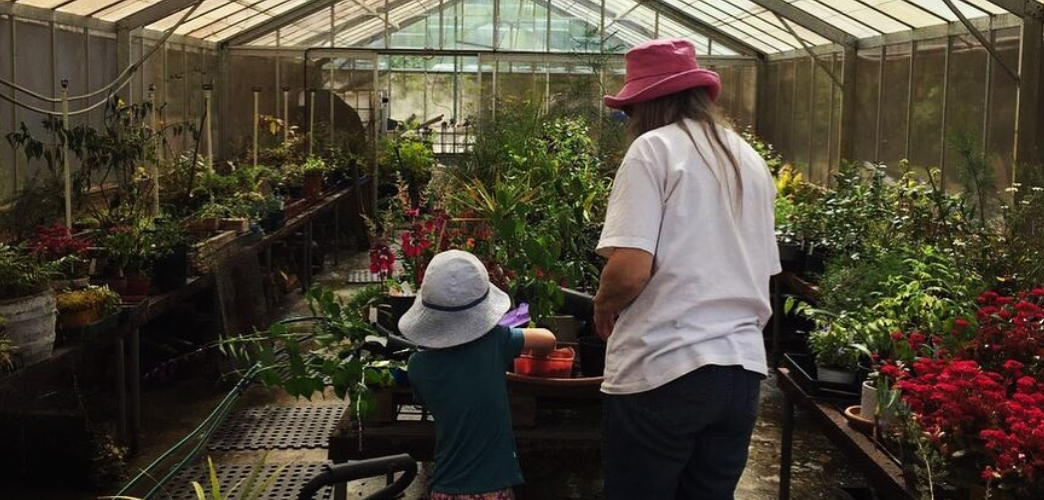
Summer 2019 – fire all around
In this issue
Technologies for building communities
-Liz Bassett
With about 150 Narara Ecovillage members, we often use technology to communicate, but not all methods work for large numbers of people: email & text messaging can be tortuous. So we’ve tried a couple of online communication platforms. We initially set up a Whatsapp group when the east coast of Australia was ablaze in 2019-20, and this allowed everybody in the village to keep in touch & share critical information. Now we are using Slack for a much broader range of purposes.
In Slack, a single group can hold many separate conversations using ‘channels’. Individuals can choose which channels to join, and also how (or if) they want to be notified when new messages come in.
So we have lots of channels, including one where people post wildlife sightings (and photos) – mostly birds, frogs, mushrooms and snakes at the moment. One of our most popular channels is ‘appreciations’, where people say nice things about each other; another channel is ‘locals info & requests’ – eg ‘Im going to the supermarket, anybody want me to pick up something?’, ‘If you see my son, please send him home for dinner’ etc. There are also interest groups with their own channels, such as ‘sourdough bread’, ‘games’, ‘shed 30 mushrooms’, ‘NEV musicians’ and many more.
We’ve found that having a shared platform like this is a game changer when it comes to communication, since it empowers people to create their own ways to connect with each other.
Something along these lines can be extremely useful for building community wherever you may be, as long as it is voluntary for people to join.
The free version of Slack will store up to 10,000 messages, which is plenty for our needs. But Slack is a massive international corporation, and that is problematic for some people for various reasons. So it may be worth investigating alternatives for your group or community.
Two great open source platforms which allow collaboration and communication across multiple groups & are currently being rolled out are:
- Hylo. The Global Ecovillage Network has recently joined Hylo.
- bHive Villages This is currently operating only in Bendigo, but it is being rolled out gradually across Australia
Stay tuned for a weekend event in October 2021, where visitors can experience a deep dive into how we do things at Narara Ecovillage.
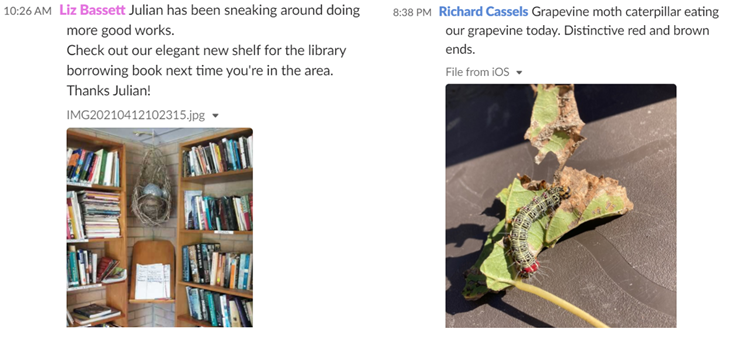
Photo: 2 recent items in Slack
Upcoming Events
Open Day at Narara Ecovillage with Biggest Morning Tea! 10:00am – 1:30pm
The Open Day shows what Narara Ecovillage is all about, and how we are putting our ideas around ecological, social and economic potential into action, including:
- shared food growing, natural retreats and Permaculture spaces
- shared community and work places
- examples of highly efficient low-carbon homes now and in the next stage
The event this month will also include fund-raising for the Cancer Council’s Biggest Morning Tea.
- Donated cakes will be sold, so come along, buy some cake and grab a coffee, hot chocolate or chai at the Coffee Cart as well. Light meals are also available.
Bookings essential: here Please note, Open Day entry fees have risen, but they are still free for Network members.
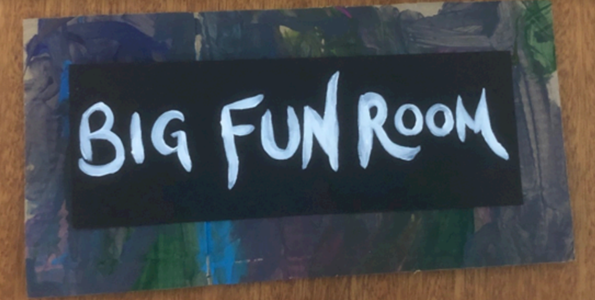
A Taste of Sociocracy – 12 June 2021
How do you get your family, business team or, in our case, 150 people to make decisions, resolve conflicts and feel that they have been heard?
Narara Ecovillage is using Sociocracy. This is a decision-making and governance system that:
- Is inclusive, transparent and equitable, including all voices
- Promotes a better use of resources, and coordination of activities
- Leads to care, respect and cooperation
- Ensures results of decisions are reviewed to determine their ongoing usefulness
This system has relevance for communities, businesses, non-profits, families and more.
Come and have a ‘taste’ of this methodology in a presentation by ecovillage founder Lyndall Parris
- WHEN: Saturday 12 June, 7:00 – 9:00 pm
- WHERE: Narara Ecovillage Big Fun Room in the Admin Building or on Zoom
- COST: $20 into Narara Ecovillage bank account (details on registration) or cash on the night
- RSVP: Lyndall@nararaecovillage.com
- Come in person for some extra joy, or join us on Zoom.
- Join Zoom Meeting
https://us02web.zoom.us/j/6048362412?pwd=dXM4KzVuSjh2U1lRck0rQVNpVDBuZz09 - Time: Jun 12, 2021 07:00 for 7:30 PM Canberra, Melbourne, Sydney
- Meeting ID: 604 836 2412
- Passcode: 2250
- Join Zoom Meeting
‘Narara Ecovillage is going from strength to strength, year by year – and it is wonderful to witness their journey. They are definitely at the forefront of Sociocracy in practice in Australia.’ Gina Price, Australia’s leading Sociocratic Consultant. Gina Price and Lyndall Parris co-presented the Narara Ecovillage experience at the inaugural international on-line Sociocracy Conference last year.
Program
- 7pm: Welcome – cuppa or glass of wine
- 7.30pm: ‘A Taste of Sociocracy’
- 9pm: Home to bed with a good…..book!

Picnic Fun: Date for your Diary: Sunday 4 July 12 – 3pm
We would love you, your family and friends to visit Narara Ecovillage for a Picnic Under the Oak Trees, as our guests – no charge!
Dust down your ole picnic rug and bring all you need for a picnic. Meet some Nararians, learn more about the ecovillage and enjoy some time on this magnificent property.
Hope you can join in.
- Sunday 4 July from 12 – 3pm
- RSVP: Lyndall@nararaecovillage.com
Narara Ecovillage News

Next-gen ideas gathering to sustainably serve future generations: an experiment
-Lyndall Parris
Narara Ecovillage has reached a significant watershed
Stage 1 of 60 homes is fully sold, with 40 homes built and 20 others in the pipeline. All up we have around 200 people involved right now, of which about ¼ are children.
Our Vision of an environmentally, socially and economically sustainable world remains, but our initial Aim is largely achieved: We will research, design and build a stylish, intergenerational, friendly demonstration ecovillage at Narara, blending the principles of ecological and social sustainability, good health, business, caring and other options that may evolve for our wellbeing.
This is an incredible achievement and it has taken every Nararian to bring it about.
But what of the future? Where to from here?
Liz Walker, co-founder of Ecovillage at Ithaca in the US – a venture that had a huge influence in the early development of Narara Ecovillage – is helpful, experienced, wise and a great friend of ours. Of late, she talked to us about continuing to envision our future, the importance of the next generation and engaging their input and ideas. We hope you will be thrilled to learn that we are acting on this advice.
On a public holiday in June, we are gathering our next-gen Nararians to participate in a ‘Picture Forming’ session on how we can serve future generations and, of course, the earth, while still living a Good Life. At the same time we are organising some supervised, bush child-play to ensure the input from our parental group.
One of our young parents eloquently wrote:“ … we are quite well placed to discuss this now as we have the benefit of hindsight, being able to reflect upon our desires, intentions, etc when we joined and how this has evolved and what direction we would like things to move in. My partner and I have actually discussed that in some ways it feels as though it will be our generation that will shape the village and its future …”

Stage 2 Nararians inspecting the site last Sunday
‘Dots on Lots’ begins
-Lyndall Parris
As many of you know, our Stage 2 Master Plan is formed, Development Consent from the Central Coast Council is getting closer, and we have subscriptions already for about 25 of the 40 Stage 2 lots. As well, we are guiding and introducing people so that together they can explore innovative, creative, more affordable, collaborative ways of housing in our second stage.
We also announce that at the end of May, we begin the earliest, first round of the ‘Dots on Lots’ process, whereby signed-up Nararians indicate which lots they would like to live on. It’s an amazing way to negotiate lot allocation, which is heartfelt, community-building and exciting.
If you are drawn to explore living at Narara Ecovillage, there is no better time than right now!
Please contact us: info@nararaecovillage.com
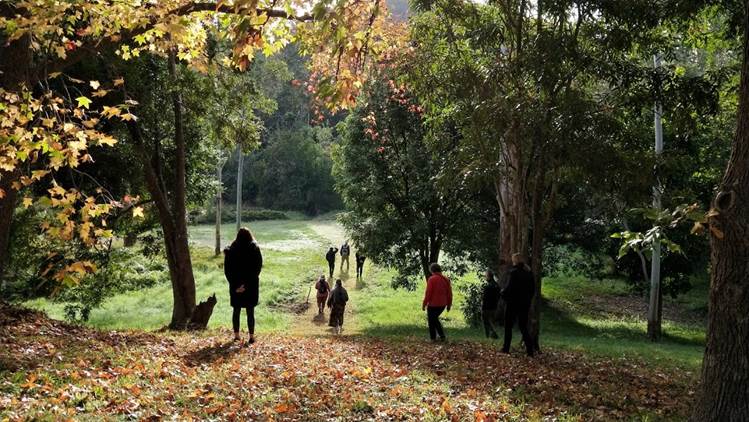
Yoga, Birds & Nature: another experiment!
-Richard Cassels
Would anybody want to come to an event combining yoga, bird watching, rainforest tales and nature photography?
This is what ecovillage members Mark O’Brien and Richard and Joan Cassels wondered a few months ago, before setting up the “Forest Aliveness Day” that went ahead last Saturday as part of the Narara Eco Living Network program of events.
As it turned out, 14 people enrolled. Braving a cold but fine morning , the first intrepid group set off for a bird listening and observing walk around the Narara Ecovillage floodplain. To enhance and focus on the sensory experience, Richard imposed a ban on asking “What Bird is That?” until the last stage of the walk. “Too often naming something means you stop experiencing it” he said. The walk was accompanied by Guy Dutson, an ace bird finder. On cue, birds chattered, squealed, squeaked, whistled, cawed and sang.

Following a shared morning tea, Mark O’Brien (Qi yoga) lead a yoga session focussed on heightening the senses and allowing mind and body to rest and be still: all essential qualities for bird listening!
The afternoon started with a guided tour of the ecovillage, and ended with a silent forest walk to put our new-learned skills into practice. Then, participants settled in for presentations by Peter Fisher, author of “Tales from the Rainforest: History and Heritage on the NSW Central Coast”, and Elizabeth Noble, talented Nature Photographer with excellent knowledge of the Central Coast forest, who gave tips on nature photography and showed a selection of her wonderful wildlife photographs.
For the very hardy, there was even an evening bird walk too, for which a pair of Bassian Thrushes kindly presented themselves along the Wetland Walkway.
Now participants & hosts are asking “when is the next one?” Stay tuned …
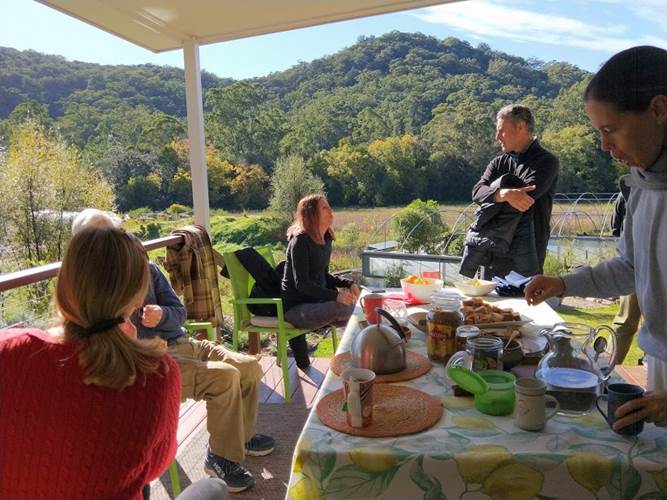
Morning tea overlooking the floodplain
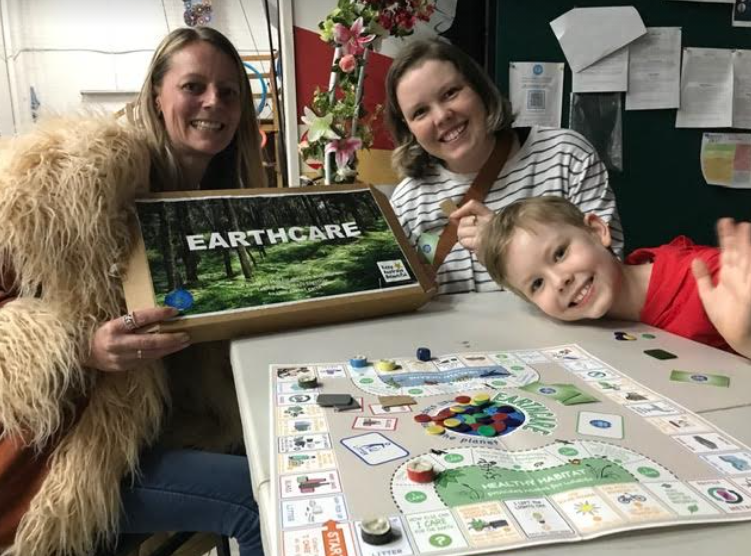
Carlee, Beth and Raph playing Earthcare at the Roundabout Circus
NEV member revives green game
Narara Ecovillagers come from all walks of life, but we have some things in common: enthusiasm and commitment to exploring greener ways of living, and that includes sustainable economic practices.
Environmental educator and campaigner Lisa Wriley has recently joined the village, after living on the Central Coast since 1999. Her special passion is composting worms, but she is also into games.
Inspired by the 1976 boardgame, CONSERVATION, Lisa is set to release an updated version, EARTHCARE. This game is a fun way to explore the many things we can do to care for the earth, connect with nature and help conserve the planet’s resources.
Lisa loved the original game CONSERVATION as a child and credits it with steering her in the direction of environmental education and campaigning. “I think the planet needs this game now more than ever. I hope that children and adults will enjoy playing the game while discovering the many ways we can all care for the earth, our common home,” says Lisa.
Check out www.earthcaregame.org to find out more about Lisa’s plans for this social enterprise, including circular manufacturing processes, local production and locally sourced materials, paying fair prices and donating 50% of profits to conservation projects. You can’t order the game through retailers yet, but you can get one making a pledge on Kickstarter.
Do a Thing a Day
Do Something Near You
This wonderful site brings together people who wish to make a difference, and people who can make that wish come true.
DoSomething works with businesses, local councils and the general public to bring about positive social and environmental change.
Here’s how to use DoSomethingNearYou
- Type in your suburb or postcode and, from the drop-down, select the area where you live.
- Select a category that interests you, like ‘Animal Welfare’, ‘Education’, ‘Environment’, ‘Action from Home’.
- Scroll through the listings and read about the different organisations and what they do.
- When you find something that interests you, contact them directly via their website, email address, phone number, or social media accounts.
Please help protect the swft parrot habitat from logging
If you live in NSW, Birdlife Australia is asking you to put in a submission to a Parliamentary Inquiry happening now into the future of the timber industry in your state. We need the MPs who are overseeing the inquiry to understand how important it is to protect Swift Parrot habitat and forests in NSW. We need to transition out of native forest logging to plantations to ensure Swift Parrots have a chance of avoiding extinction.
Go here to write your submission
Birdlife Australia are asking writers to add their personal story to the email, but if their suggestions don’t work for you, please just write whatever does. You don’t need to be a birder to be concerned about habitat loss!
Photo above: campaigns Manager, Erin Farley, Environment Minister Sussan Ley MP, Senator Jane Rice and The Australian National University’s Deb Saunders searching for the Critically Endangered Swift Parrot in Canberra. (They didn’t see any)
Recommendation

Sustainability and Heritage: two case studies
-John Shiel
I met sustainability architect, Dr Rena Czaplinska-Archer, at John Seed’s recent Deep Ecology workshop. Rena is an ecological and heritage architect, sustainability expert, artist, somatic practitioner, writer and former university lecture.
We recently held a workshop where we invited experts to help us improve the Narara Ecovillage Building Standards. Rena mentioned two case studies at her presentation: Castlecrag Estate, Sydney & The Sea Ranch, California, and she has now published an article about them. Our NEV members and friends might find it extremely interesting.
Rena writes: “An ecological approach recognises that we are all inter-connected and our wellbeing depends on the wellbeing of the three pillars supporting life on earth: environment, economy and society. When one of the pillars is damaged and suffers the other pillars suffer too, when one dies (ie the environment), the others die. However, when the three pillars are well balanced and equally considered, they create stable, self-maintaining and resilient communities. This is what design for wellbeing is all about.
Some examples of such communities built over the last 100 years still exist and are exciting and inspiring places to visit. Both Castlecrag in Sydney and Sea Ranch in California are great examples.” <read the full article here>

